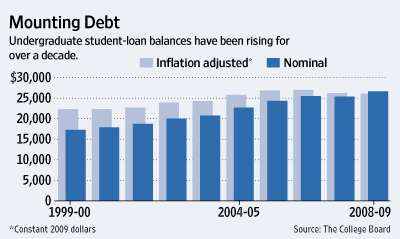Archive for the ‘Wall Street Journal’ tag
Noodling = capturing catfish in the wild by hand or feet
The Wall Street Journal has gone downhill since it was acquired by News Corporation.
Even so, I still read it.
I feel guilty about it, but I loved the paper for so long it’s hard to stop reading it.
One of the things I love about the paper is it prints some crazy stories. This is not a News Corp. addition — the Wall Street Journal has published crazy stories for decades.
One of my favorite crazy Wall Street Journal articles was published about 20 years ago. The article spoke about how rat is served in Southern China in restaurants that specialize in serving just rat based dishes. The writing was so colorful and visceral I remember it well even today. Apparently rat causes nosebleeds for some diners. According to the story, eating rat can make you feel warm and perspire so much that you are inclined to take off your shirt in the restaurant, as some diners did in front of the Journal reporter.
The image of a group of bare chested men eating rat with blood running from their noses is hard to forget.
When I was in Wuhan, China in 2005 for the TeX Users Group International Typesetting Conference I asked the locals if there were any rat serving restaurants in the city. I was told no, that I would have to go further south for that. The article said the restaurant grade rats are raised using a free range technique on dedicated pasture surrounded by electric fencing. The article made it sound like the rats are fed well and are healthy and clean. I would try them. I want to try them. Hmmm, maybe I could buy some lab rats and try to cook them at home? What would my 4 roommates would say about that?
On May 16, 2011 the Wall Street Journal published a story that nearly is as captivating as the rat story — Long Arm of the Law Penalizes Texans Who Nab Catfish by Hand.
There is a way to fish for catfish called noodling. Here’s a description from the article:
Techniques vary. When the fisherman puts his hand into the hole where the fish is, the fish usually bites. Then he can grab the catfish by a lower-jaw bone, or, if he sticks his arm in deep enough into the fish’s body, he can poke his fingers through its gills.
But most important is controlling the tail, Mr. Webb says, which is usually done by the noodler wrapping his or her legs around the fish. “If you don’t get that tail immobilized, I don’t care how big or strong you are, you’re not going to whip that fish,” he says.
For extra reach, some practitioners stick their legs instead of their arms into dark underwater holes. Apparently, you can lose a leg noodling, judging from the shocking photograph accompanying the article, shown here, which shows three men. One has two legs, one has one leg and one has zero legs. They just caught a 60 pound catfish some 5 feet long, and they’re smiling widely.
I knew I would write about this story as soon as I read it. What I didn’t know at the time of publication was that I was soon going to be raising catfish in my backyard in San Francisco, California, USA.
I placed my aquaponics fish tank in my new Harbor Freight greenhouse last week, and I have catfish swimming in the fish tank. Don’t worry, they’re small enough I won’t lose my arms or legs anytime soon.
I have pan fried four catfish in recent weeks, and I like catfish more than Tilapia. I find catfish has more flavor than Tilapia. I am having trouble keeping the catfish alive, which is why I’ve been eating so much catfish recently. But I have read they are almost as easy to raise as Tilapia. I fear I am doing something wrong. I will figure it out and make a success of my catfish project.
Catfish is harder to prepare because you have to pull off the raw skin with large shop pliers, which is a physical chore and messy. But I’m getting better at it, and after ten more fish I predict I’ll be able to remove the skin in under a minute.
A while back I bought a used 275 gallon IBC tote for USD $120 that I plan to cut the top off of. I will then use this food grade tote as a monster fish tank. I should be able to raise 100 to 200 catfish at a time in this tank, which will give me so much fish I should be able to eat a full fish every two days or so, without depleting the stock. I have read that catfish are so efficient that they convert 2 pounds of feed into 1 pound of fish. The feed can be mostly worms you grow yourself using kitchen scraps as feed.
Money lessons for everyone
I read Money Lessons for Every High-School Graduate by Zac Bissonnette in today’s Wall Street Journal newspaper. Bissonnette’s piece is one of the most direct and sensible articles about money I’ve yet read.
While the lessons of this article are aimed at recent high school graduates, I think the lessons have yet to be learned by many people.
Lesson number four particularly resonates with me:
“Materialism is misery: Lives of thrift and conscientiousness lead to less stress, greater enjoyment of the things we do have and a lighter carbon footprint. But most of our societal associations with wealth are deeply connected with materialism: luxury goods, power and status.
“The more materialistic values are at the center of our lives, the more our quality of life is diminished,” says Knox College psychologist Tim Kasser, author of “The High Price of Materialism.”
Recognize the real benefits of wealth — freedom and flexibility — and don’t let the pursuit of its illusory trappings interfere with your ability to reap those rewards.”
Thanks to my generous relatives, rental and investment income, I have the freedom and flexibility the passage refers to.
That makes me richer than almost everyone I know, in my mind.
Even better, I am happy. I like my house, car and possessions, and I rarely dream of upgrading them.
Might I appreciate a gilded existence? Perhaps, but perhaps not, because with material riches come pressures that I have seen make many people unhappy.
I’ll take my happy, freedom filled middle class life over an unhappy, constrained upper class life… with joy.
I am confident I’ll make a lot more money, but happiness is more important than money.
4. Materialism is misery: Lives of thrift and conscientiousness lead to less stress, greater enjoyment of the things we do have and a lighter carbon footprint. But most of our societal associations with wealth are deeply connected with materialism: luxury goods, power and status.
“The more materialistic values are at the center of our lives, the more our quality of life is diminished,” says Knox College psychologist Tim Kasser, author of “The High Price of Materialism.”
Recognize the real benefits of wealth — freedom and flexibility — and don’t let the pursuit of its illusory trappings interfere with your ability to reap those rewards.


